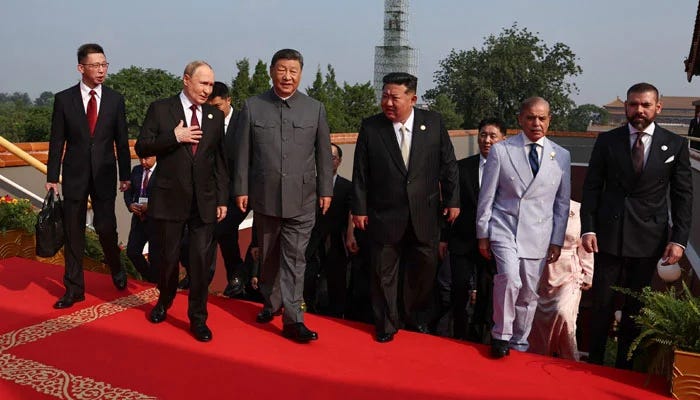SCO Summit Success Signals Shift in Global Power Balance
Historic Gathering Demonstrates China's Growing Diplomatic Influence
The Shanghai Cooperation Organization summit held in Tianjin from August 31 to September 1, 2025, drew over 20 world leaders and representatives from 10 international organizations, making it the largest gathering in the organization's 24-year history. President Xi Jinping hosted an unprecedented assembly that included Indian Prime Minister Narendra Modi, Russian President Vladimir Putin, Iranian President Masoud Pezeshkian, Pakistani Prime Minister Shehbaz Sharif, Turkish President Recep Tayyip Erdogan, and UN Secretary-General Antonio Guterres. The scale of attendance represented a diplomatic victory for Beijing, particularly given the complex geopolitical tensions affecting several of these relationships and the backdrop of escalating U.S. trade policies that have pushed many nations to seek alternative partnerships.
The summit's success built upon months of careful diplomatic preparation, with Chinese foreign ministry officials conducting extensive bilateral consultations to ensure maximum participation. Beijing's choice of Tianjin as the host city carried symbolic weight, representing China's historical openness to international trade and cooperation while avoiding the political sensitivities that might have accompanied a Beijing venue. The logistics alone demonstrated China's organizational capabilities, with seamless coordination of multiple security details, translation services in eight languages, and accommodation arrangements that impressed attending delegations. Chinese media coverage emphasized the "red carpet treatment" afforded to each leader, with personalized welcome ceremonies and carefully choreographed bilateral meetings that showcased China's diplomatic sophistication.
The timing proved advantageous for China, as increased American tariffs on various member nations created economic incentives for participants to explore alternative trade and financial arrangements outside traditional Western-dominated institutions. U.S. tariffs on Russian energy imports had reached 50 percent, while steel and aluminum tariffs affecting Turkey and Iran created additional pressure points. These economic realities transformed what might have been a routine diplomatic gathering into an urgent consultation on alternative economic arrangements. Xi's opening address directly referenced these pressures without naming the United States, speaking instead of "bullying practices" and "Cold War mentality" that threatened global stability.
The summit produced the Tianjin Declaration, which established commitments for artificial intelligence cooperation, plans for an SCO development bank, and enhanced multilateral frameworks designed to reduce dependence on the U.S. dollar. Xi backed these initiatives with concrete financial commitments of 2 billion yuan in grants and 10 billion yuan in loans, moving the conversation beyond diplomatic rhetoric toward practical implementation. The AI cooperation framework included provisions for shared research facilities in member countries, joint development of language processing technologies, and coordinated approaches to AI governance that could challenge Western technological dominance. The proposed SCO development bank received initial capitalization commitments from China, Russia, and Iran, with India indicating conditional support pending resolution of operational details.
China's diplomatic success gained additional weight through its September 3 military parade in Beijing, commemorating the 80th anniversary of World War II's end in Asia. The event, attended by Putin and North Korean leader Kim Jong Un, featured displays of hypersonic weapons and nuclear-capable missiles that demonstrated China's military modernization without directly threatening any specific nation. The parade route through central Beijing showcased advanced weaponry including the DF-41 intercontinental ballistic missile, new-generation fighter aircraft, and cutting-edge electronic warfare systems. This military demonstration served as a powerful complement to the economic partnerships forged at the summit, projecting strength while avoiding direct confrontation with Western powers.
Putin's participation proved particularly significant given Russia's international isolation following its actions in Ukraine, with his post-parade press conference outlining Russia's commitment to fair energy pricing for China through the Power of Siberia II pipeline, projecting 100 billion cubic meters of gas annually. The Russian president used the platform to address multiple audiences simultaneously, welcoming Trump administration efforts on Ukraine while maintaining that military resolution remained necessary if diplomatic talks failed. His comments on energy cooperation emphasized mutual benefit rather than dependence, noting that China's growing energy needs aligned perfectly with Russia's need for reliable export markets following European sanctions. The pipeline project, expected to begin operations by 2027, represents the largest energy infrastructure agreement between the two nations and provides Russia with crucial revenue streams independent of Western financial systems.
Strategic Realignments Amid Trade Tensions
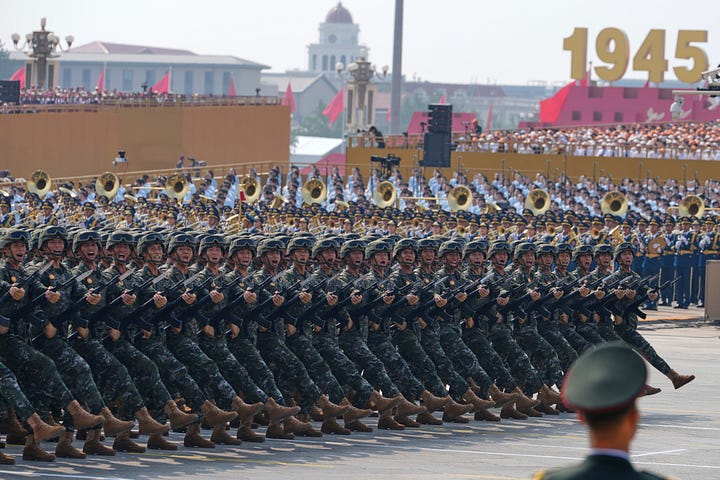
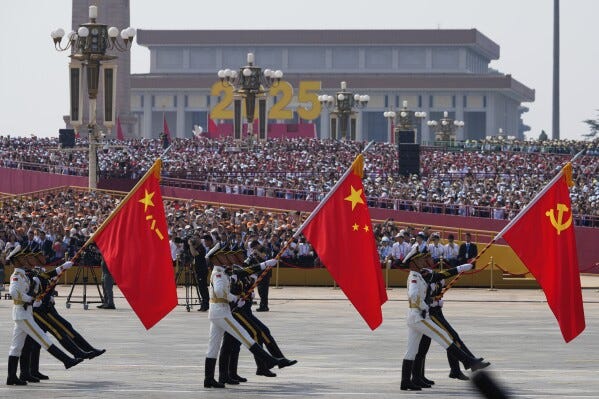
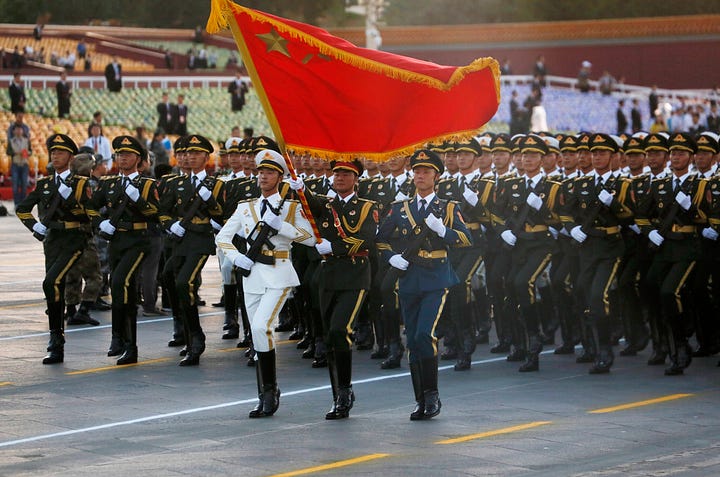
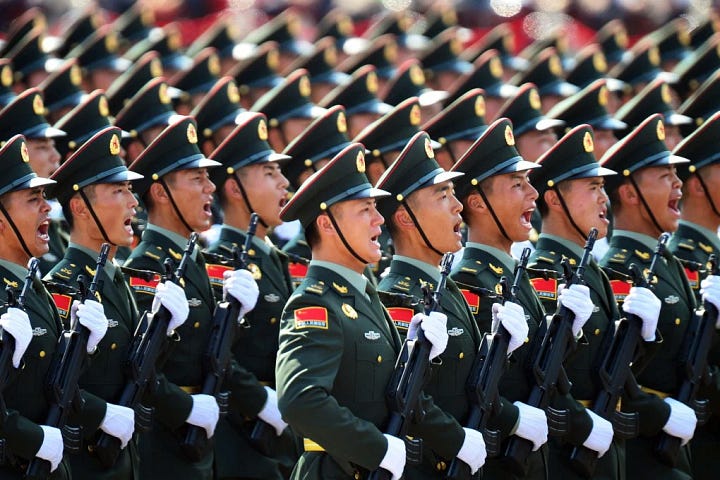
India's participation under Prime Minister Modi represented perhaps the summit's most notable diplomatic achievement, marking his first visit to China in seven years amid ongoing border tensions and competing regional interests. The visit occurred against the backdrop of increased U.S. tariffs on Russian oil imports, creating economic incentives for New Delhi to explore alternative partnerships while maintaining its traditional non-aligned foreign policy stance. Modi's decision to attend required careful domestic political calculation, as opposition parties criticized engagement with China while border disputes remained unresolved. However, economic pressures from American trade policies created compelling reasons for diplomatic flexibility, particularly given India's dependence on affordable Russian energy for its manufacturing sector.
Modi's bilateral discussions with Xi addressed multiple contentious issues beyond mere ceremonial exchanges, including border peace agreements that established new verification mechanisms for disputed territories, resumed flight connections between major Indian and Chinese cities that had been suspended since 2020, and expanded economic cooperation in sectors ranging from pharmaceuticals to renewable energy. The Indian leader characterized SCO nations as "partners not rivals," signaling a pragmatic approach to regional cooperation that prioritizes economic development over ideological alignment. This nuanced positioning allows India to maintain relationships with both Western and Eastern blocs while protecting its economic interests, particularly given the 50 percent American tariffs on Russian oil that have significantly impacted India's energy costs and contributed to inflationary pressures in domestic markets.
The Tianjin Declaration's specific condemnation of the Pahalgam terror attack aligned with India's security priorities, providing additional incentive for engagement beyond purely economic considerations. This inclusion represented a diplomatic victory for New Delhi, as it demonstrated SCO recognition of India's terrorism concerns and implicitly supported Indian positions on regional security issues. Modi's interactions with Putin proved equally significant, with their shared limousine ride and extended private consultations reinforcing bilateral cooperation despite international pressure on both nations. These symbolic moments of unity carried significant weight in regional media coverage and public perception, with Modi trending on Chinese social media platforms and their "hand-in-hand" walk with Xi and Putin becoming a top search term on Baidu.
The diplomatic choreography extended to smaller details that revealed careful planning and mutual respect. Modi's accommodation in the same hotel complex as Putin facilitated informal consultations, while his meetings with Central Asian leaders opened new possibilities for trade routes that bypass traditional Western-controlled shipping channels. Indian officials noted particular progress in discussions with Iranian representatives about expanded port facilities at Chabahar, which could provide India with improved access to Central Asian markets while reducing dependence on Pakistani territory for regional trade.
Regional media responses varied significantly, reflecting different national interests and perspectives on the changing global order, but showed remarkable consistency in recognizing the summit's importance for future international relations. Southeast Asian outlets, particularly in Singapore and South Korea, interpreted the summit as Beijing's direct challenge to U.S. dominance in the region, with Korean analysis noting that Trump's tariff policies had inadvertently accelerated Global South unity around Chinese initiatives. The Straits Times emphasized the visual symbolism of the event, describing elaborate welcome ceremonies and noting the contrast between Chinese hospitality toward visiting leaders and recent American diplomatic tensions with several of the same nations.
Japanese media coverage proved more cautious, with Nikkei focusing on the economic implications of proposed SCO initiatives rather than their geopolitical significance. Japanese analysts expressed concern about the AI cooperation framework and development bank as potential rivals to existing multilateral institutions in which Japan plays prominent roles. South Korean coverage balanced economic opportunities against security concerns, noting that enhanced China-Russia cooperation could complicate Korean Peninsula dynamics while potentially offering alternative trade partnerships amid U.S. trade uncertainties.
Economic Architecture and Financial Independence
The summit's concrete economic proposals provided substance beyond diplomatic symbolism, with Xi's initiatives targeting the establishment of parallel financial institutions that could challenge the dollar-dominated global system through practical alternatives rather than direct confrontation. The proposed SCO development bank received detailed attention during closed-door sessions, with preliminary agreements on governance structure, lending criteria, and operational headquarters. Unlike existing multilateral development banks that require extensive Western approval processes, the SCO bank would operate under simplified decision-making procedures that could accelerate infrastructure financing for member nations. Initial capitalization discussions centered on contributions proportional to member nation GDP, with China indicating willingness to provide the largest share in exchange for corresponding voting rights.
The bank's lending priorities would focus on infrastructure connectivity, energy projects, and digital technology development that supports member nation economic integration. Specific project categories include transportation corridors linking Central Asia with Chinese and Indian markets, renewable energy installations that reduce member dependence on Western technology, and telecommunications infrastructure that enables secure communications independent of Western-controlled networks. Russian officials emphasized the bank's potential role in financing energy infrastructure that connects Siberian resources with Asian markets, while Iranian representatives highlighted opportunities for port development and regional transportation hubs.
Currency arrangements received extensive discussion, with commitments to local currency settlements aimed at reducing transaction costs and currency risks for member nations while gradually diminishing dollar dependence. The mechanism would operate through bilateral currency swap agreements that enable direct trade settlement between member countries without dollar conversion. China's digital yuan infrastructure provides technical foundation for these arrangements, while Russia's experience with sanctions-resistant financial systems offers operational models for other members. Indian officials expressed interest in expanding rupee-based trade arrangements that had previously been limited to energy transactions with Russia.
Russia's integration into these systems offers pathways around Western sanctions while providing China with favorable energy terms, creating mutual benefits that strengthen bilateral cooperation despite international pressure. The Power of Siberia II pipeline represents the largest component of this cooperation, with Russian commitments to provide China with natural gas at prices significantly below European market rates. Additional agreements cover mineral exports, agricultural products, and manufactured goods that utilize alternative logistics networks avoiding Western-controlled shipping routes. Russian officials noted that these arrangements had already enabled Moscow to maintain economic growth despite comprehensive Western sanctions, while Chinese counterparts emphasized the strategic value of diversified energy supplies.
Middle Eastern coverage through outlets like Al Jazeera framed the SCO gathering as evidence of shifting global power dynamics, though analysts noted internal contradictions within the organization that could limit its effectiveness as a cohesive alternative to Western institutions. The presence of both India and Pakistan, despite their ongoing tensions, highlighted the pragmatic rather than ideological nature of these partnerships. Iranian media emphasized opportunities for expanded regional cooperation, particularly in energy sector partnerships that could reduce the impact of American sanctions on Iranian oil exports. Turkish coverage focused on potential benefits for Ankara's economic diversification efforts, with particular attention to proposed transportation corridors that could enhance Turkey's role as a bridge between European and Asian markets.
South Asian media emphasized the economic opportunities presented by enhanced SCO cooperation, particularly in energy and infrastructure development, while acknowledging the limitations imposed by existing bilateral disputes and competing national interests within the organization. Pakistani coverage highlighted the potential for expanded China-Pakistan Economic Corridor projects under SCO framework, while Bangladeshi media noted opportunities for regional connectivity projects that could improve access to Central Asian markets. Afghan representatives, attending as observers, expressed hope that SCO cooperation could facilitate reconstruction efforts and regional integration despite ongoing political challenges.
Social media platforms amplified the summit's symbolic impact, with discussions ranging from serious geopolitical analysis to viral moments that captured public attention across multiple countries and languages. The "hand-in-hand" imagery of Xi, Modi, and Putin walking together became a viral symbol of multipolar cooperation, contrasting sharply with narratives of Western isolation of these leaders. Chinese social media users created memes positioning the SCO as an ideological challenge to Western dominance, while Indian users focused on economic opportunities and border stability achievements. Russian social media emphasized the military parade and energy cooperation agreements as evidence of successful sanctions resistance.
Pakistani Prime Minister Sharif's awkward handshake attempt drew mockery online, illustrating the authentic nature of these diplomatic interactions while highlighting internal SCO dynamics and the personal relationships that influence international cooperation. The incident became a trending topic across regional social media platforms, with users creating humorous content that paradoxically humanized the diplomatic process and made the summit more relatable to general audiences. Putin's conference remarks, including his invitation for Ukrainian President Zelensky to visit Moscow, generated significant discussion about potential pathways to conflict resolution, with his defense of fair energy pricing for China reinforcing themes of Eurasian economic integration independent of Western financial systems.
Long-term Implications for Global Order
The artificial intelligence cooperation centers proposed by Xi address both technological development and data sovereignty concerns that have grown among nations wary of Western tech dominance, particularly given recent American restrictions on semiconductor exports and technology transfers to several SCO member countries. These initiatives create frameworks for technology transfer and development that bypass traditional Western-controlled channels, offering member states alternatives to American and European technology partnerships while fostering indigenous innovation capabilities. The AI cooperation framework includes provisions for shared research facilities, joint development programs, and coordinated approaches to AI governance that could establish alternative global standards for artificial intelligence development and deployment.
Specific AI cooperation projects include natural language processing systems for regional languages, agricultural optimization technologies suited to member nation climates, and financial technology platforms that support alternative payment systems. Chinese officials outlined plans for AI research centers in member capitals, with joint funding arrangements and technology sharing agreements that would accelerate development timelines while reducing individual nation costs. Russian participation brings expertise in cybersecurity and defense applications, while Indian involvement contributes software development capabilities and English-language market access. Iranian and Turkish participation adds regional expertise and potential European market connections.
The centers would operate under governance structures that ensure member nation sovereignty over domestic AI development while facilitating international cooperation on shared challenges. Unlike Western technology partnerships that often require adherence to American export control regulations, the SCO framework would prioritize member nation interests and regional stability. This approach has attracted interest from countries seeking to develop domestic technology capabilities without accepting Western restrictions on end-use applications or export destinations.
Data sovereignty provisions within the AI cooperation framework address growing concerns about Western technology companies' control over critical information infrastructure. Member nations would maintain ownership of data generated within their territories while sharing specific datasets for collaborative research purposes. This approach contrasts with current arrangements where American and European technology companies often retain broad usage rights over data collected in foreign markets. The framework includes provisions for secure data sharing protocols, joint cybersecurity standards, and coordinated responses to foreign technology interference.
The voluntary nature of SCO participation maintains member state autonomy while providing coordination mechanisms, contrasting with more rigid alliance structures that may prove less sustainable for diverse national interests and varying levels of economic development. This flexibility has enabled the organization to accommodate countries with different political systems, economic priorities, and international relationships while maintaining focus on practical cooperation rather than ideological alignment. The Tianjin summit demonstrated this principle through bilateral meetings that allowed individual nations to pursue specific interests within the broader multilateral framework.
Member nations retain freedom to participate selectively in SCO initiatives based on domestic priorities and international commitments. India's conditional participation in the development bank, Turkey's focus on transportation projects, and Iran's emphasis on energy cooperation illustrate how the framework accommodates diverse national strategies. This approach has attracted countries seeking alternatives to Western-dominated institutions without requiring complete alignment with Chinese foreign policy objectives or abandonment of existing international relationships.
The summit's success in attracting diverse leadership demonstrates the appeal of alternative power structures amid increasing global fragmentation, particularly as traditional international institutions face questions about representativeness and effectiveness in addressing contemporary challenges. Economic pressures often drive diplomatic realignment more effectively than ideological appeals, and current U.S. trade policies have provided practical incentives for SCO cooperation that transcend historical rivalries and competing regional interests. China's role as convenor and financial backer positions Beijing as the natural leader of this emerging bloc, though the organization's flexible structure allows members to pursue their national interests without complete subordination to Chinese strategic objectives.
The economic incentives for SCO cooperation have strengthened significantly due to American trade policies that have increased costs for member nations while creating uncertainty about future access to Western markets and technology. These conditions have accelerated discussions about alternative arrangements that previously might have remained theoretical. The summit's concrete financial commitments and institutional proposals provide practical pathways for reducing Western dependence while maintaining economic growth and technological advancement.
Critics argue that optics outweighed substantive policy changes, noting that many proposed initiatives lack detailed implementation frameworks and that internal tensions within the SCO limit its transformation into a cohesive alternative to Western institutions. Skeptics point to ongoing India-Pakistan tensions, territorial disputes between China and India, and competing energy interests among member nations as evidence that practical cooperation may prove more limited than summit rhetoric suggests. Some analysts question whether the proposed financial institutions can achieve sufficient scale and efficiency to compete effectively with established multilateral banks.
The Tianjin summit established momentum for continued cooperation and demonstrated potential for coordinated responses to Western policies. The SCO's achievement lies in establishing frameworks for cooperation providing alternatives to Western-dominated institutions while respecting member nation sovereignty. Multipolarity has moved beyond theoretical discussions to operational reality, with alternative power centers gaining legitimacy and practical influence in international affairs.
While complete transformation of the global order remains a distant prospect, events like the Tianjin summit indicate that the foundations for such change are being actively constructed through practical cooperation rather than confrontational rhetoric. The SCO's approach of offering alternatives rather than demanding exclusive loyalty may prove more sustainable than previous attempts to create rival blocs. Success will depend on the organization's ability to deliver concrete benefits to member nations while managing internal contradictions and external pressures that could undermine cooperation efforts.





